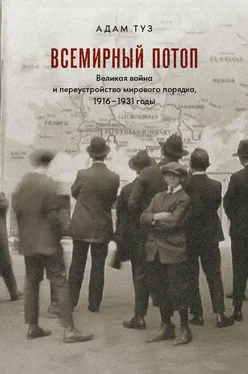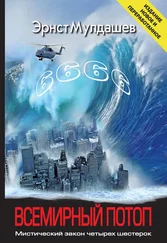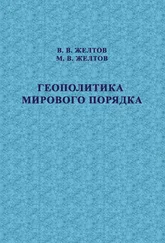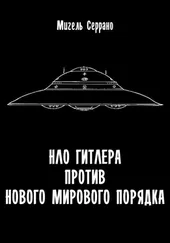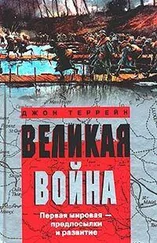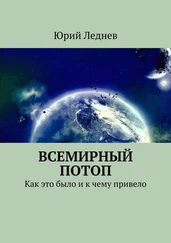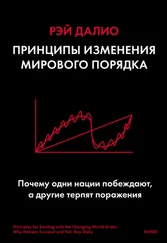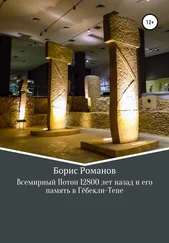Zhang, China, p. 79.
Chesneaux et al., China, p. 67–68.
Zhang, China, p. 75–99.
Y. T Matsusaka, The Making of Japanese Manchuria, 1904–1932 (Cambridge, MA, 2001),p. 241.
L. A. Humphreys, The Way of the Heavenly Sword: The Japanese Army in the 1920s (Stanford, CA, 1995), p. 175.
Ibid., 41.
Matsusaka, The Making, p. 241.
Zhang, China, p. 139–141.
S. R. Schram and N. J. Hodes (eds), Mao’s Road to Power: Revolutionary Writings 1912–1949 (New York, 1992), vol. 1, p. 321–322, 337, 357–367, 390, and vol. 2, p. 159–160, 186–188.
W. C. Kirby, Germany and Republican China (Stanford, CA, 1984), p. 35.
B. A. Ellman, Diplomacy and Deception: The Secret History of Sino-Soviet Diplomatic Relations, 1917–1927 (London, 1997), p. 25.
Zhang, China, p. 157.
A. S. Link (ed.) et al., The Papers of Woodrow Wilson [PWW], 69 vols (Princeton, NJ, 1966-94), vol. 61, p. 426–436.
Ibid., p. 225.
Ср.: R. S. Baker, Woodrow Wilson and the World Settlement (New York, 1922), и L. E. Ambrosius, Woodrow Wilson and the American Diplomatic Tradition: The Treaty Fight in Perspective (Cambridge, 1987).
The New York Times, «Bullitt Asserts Lansing Expected the Treaty to Fail», 13 September 1919.
W. C. Bullitt and S. Freud, Thomas Woodrow Wilson: A Psychological Study (Boston, MA, 1967).
The New York Times, «Lodge Attacks Covenant and Outlines 5 Reservations; Assailed by Williams», 13 August 1919.
Ambrosius, Woodrow Wilson, p. xxx.
W. C. Widenor, Henry Cabot Lodge and the Search for an American Foreign Policy (Berkeley, CA, 1980).
The New York Times, «Qualify Treaty on Ratification, Says Elihu Root», 22 June 1919.
PWW, vol. 42, p. 340–344.
T. J. Knock, To End All Wars: Woodrow Wilson and the Quest for a New Order (Princeton, NJ, 1992), p. 267.
M. Leffler, The Elusive Quest: America’s Pursuit of European Stability and French Security, 1919–1933 (Chapel Hill, NC, 1979), p. 15.
W. Lippmann, «Woodrow Wilson’s Approach to Politics», New Republic, 5 December 1955; T. Bimes and S. Skowronek, «Woodrow Wilson’s Critique of Popular Leadership: Reassessing the Modern-Traditional Divide in Presidential History», Polity 29 (1996), p. 27–63.
K. Wimer, «Woodrow Wilson’s Plan for a Vote of Confidence», Pennsylvania History 28 (1961), p. 2–16, and R. L. Merritt, «Woodrow Wilson and the „Great and Solemn Referendum“, 1920», The Review of Politics 27 (1965), p. 78–104.
См. речи, произнесенные в августе и сентябре 1916 года, в: PWW, vol. 40.
A. Hagedorn, Savage Peace: Hope and Fear in America, 1919 (New York, 2007), p. 297–322.
A. Hart (ed.), Selected Addresses and Public Papers of Woodrow Wilson (New York, 1918) p. 270.
W. Wilson, A History of the American People (New York, 1902), vol. 5, p. 59–64.
Hart (ed.), Selected Addresses, p. 271.
The New York Times, 26 November 1919.
T. Kornweibel, «Seeing Red»: Federal Campaigns against Black Militancy, 1919–1925 (Bloomington, IN, 1998).
The New York Times, «President Cheered from Pier to Hotel», 25 February 1919.
Hagedorn, Savage Peace, p. 218–225.
PWW, vol. 62, p. 58.
The New York Times, «Raid from Coast to Coast», 3 January 1920; R. K. Murray, Red Scare: A Study in National Hysteria, 1919–1920 (Minneapolis, MN, 1955).
J. A. McCartin, Labor’s Great War: The Struggle for Industrial Democracy and the Origins of Modern American Labor Relations (Chapel Hill, NC, 1997).
J. Cooper, The Warrior and the Priest: Woodrow Wilson and Theodore Roosevelt (Cambridge, MA, 1983), p. 264.
PWW, vol. 64, p. 84.
Commission of Enquiry, the Interchurch World Movement, «Report on the Steel Strike of 1919» (New York, 1920); D. Brody, Labor in Crisis: The Steel Strike of 1919 (New York, 1965).
PWW, vol. 63, p. 600.
D. Montgomery, The Fall of the House of Labor: Workplace, the State, and American Labor Activism, 1865–1925 (New Haven, CT, 1988).
McCartin, Labor’s Great War, p. 199–220.
The New York Times, «Palmer Pledges War on Radicals», 1 January 1920.
R. K. Murray, The Politics of Normalcy: Governmental Theory and Practice in the Harding-Coolidge Era (New York, 1973), p. 3; idem., The Harding Era: Warren G. Harding and His Administration (Minneapolis, MN, 1969), p. 82.
B. M. Manly, «Have Profits Kept Pace with the Cost of Living?», Annals of the American Academy of Political and Social Science 89 (1920), p. 157–162, and E. B. Woods, «Have Wages Kept Pace with the Cost of Living?», Annals of the American Academy of Political and Social Science 89 (1920), p. 135–147.
The New York Times, «Palmer Has Plan to Cut Living Cost», 17 December 1919, p. 19.
The New York Times, «Urge President to Return», 24 May 1919, p. 4.
Interchurch World Movement, «Report», p. 94–106.
H. L. Lutz, «The Administration of the Federal Interest-Bearing Debt Since the Armistice», The Journal of Political Economy 34 (1926), p. 413–457.
M. Friedman and A. J. Schwartz, A Monetary History of the United States, 1867–1960 (Princeton, NJ, 1963), p. 222–226.
A. Meltzer, A History of the Federal Reserve (Chicago, IL, 2003), vol. 1, p. 94–95.
Friedman and Schwartz, Monetary History, p. 227.
Meltzer, History, p. 101–102.
Friedman and Schwartz, Monetary History, p. 230.
45. Meltzer, History, p. 127.
The New York Times, «Williams Strikes at High Interest», 11 August 1920, 24, and «Bank Convention Condemns Williams», 23 October 1920, p. 20.
J. Higham, Strangers in the Land: Patterns of American Nativism, 1860–1925 (New Brunswick, NJ, 1988); N. K. MacLean, Behind the Mask of Chivalry: The Making of the Second Ku Klux Klan (Oxford, 1995).
Читать дальше
Конец ознакомительного отрывка
Купить книгу
